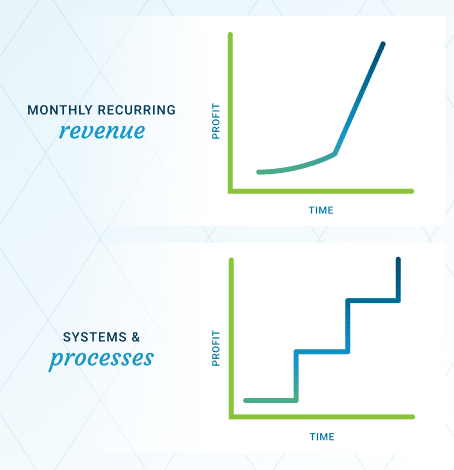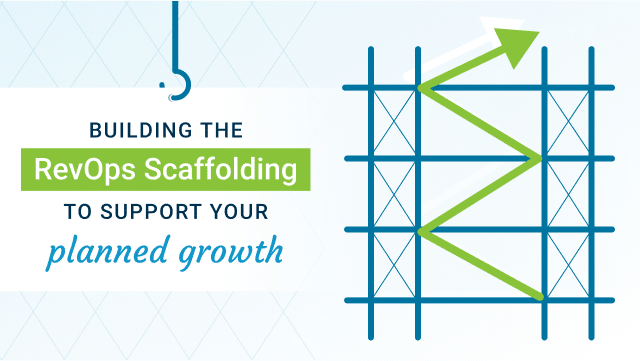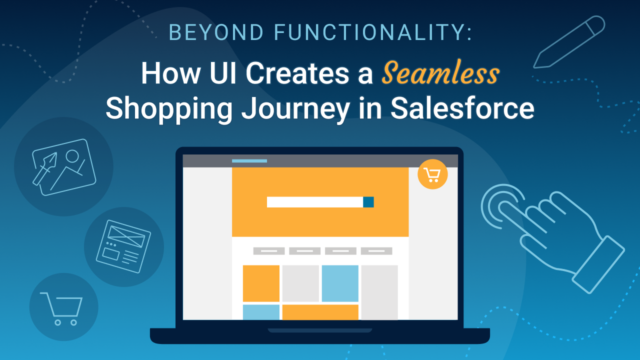In a perfect world, a company’s revenue grows in an upward arc. As a Canadian, we like to think that it resembles a hockey stick curve. However, the systems and processes that provide the scaffolding to support that growth curve tend to evolve in a stair-step fashion.
While CloudKettle is a fan of growth, some maturity leaps tend to happen in a single bound (not a straight line), with iterative improvements happening on a regular basis afterwards. Some of these large leaps could include:
- the deployment of a CPQ
- the move to a multi-currency/multi-lingual org
- the deployment of a customer or partner portal like Experience Cloud
- better marketing automation or enrichment platform deployments
Ideally, the RevOps maturity scaffolding is built ahead of the revenue growth curve so that it can support it instead of letting MRR sag. However, most often, this isn’t the case. For example, most companies will begin the process of deploying a solution like CPQ only when they desperately need it, meaning it goes live two quarters later than the business required that system – resulting in lost sales, contract errors, missed upsell opportunities, and so on.

Signs Your Company is Growing Without the Right Systems in Place
When growth is strong, an organization often needs to be planning those stair step platform leaps in maturity 12-18 months in advance to ensure budget and headcount is allocated, and projects launch before their absence impacts revenue. Often, organizations find:
- The revenue growth curve was very strong, but now it is leveling off and even sagging.
- Attempts to deploy more sophisticated sales processes (such as the introduction of specialization in the form of SDR and BDRs, Sales Engineers, and CSMs) are failing to achieve lift-off.
- Processes that made sense before as being highly manual or ad hoc have not scaled, and sales are delayed because of a lack of systemization and automation in:
- Deal desks and discount approvals
- Lead routing
- Quote generation and contract signatures
- Managing renewals
- Calculating pipeline and determining attribution
- Assigning opportunities to sales reps after being qualified by SDRs/BDRs
It’s easy to see why these issues happen. Once an organization has fallen behind in RevOps maturity and is racing to prop the revenue curve up, it’s almost impossible to stand back and forecast what needs to be in place in a year. Even when this is done, it tends to focus on what is needed to support today or next month, not the systems required in 12 months. So what do companies need to do to ensure that the proper scaffolding is in place to adequately support growth?
Assess the Systems you have in Place
The first step is to review the systems (or lack thereof) that are in place today and plan for what is required to meet the organization’s growth plans for the next two years. This often involves a RevOps audit from an organization like CloudKettle, which includes not only an assessment of existing issues and gaps, but an 18-24 roadmap that can be used to plan for budgets, resourcing, and planning.
If thorough and done well, an audit like this will take 1-2 months, involve a deep dive by certified professionals into platforms like Salesforce, enrichment, marketing automation, and business intelligence, include stakeholder interviews, and provide not only a definitive document of what exists today but a prioritized set of tasks of what needs to be done to achieve maturity and when.
Once complete, there should be a written document provided, but also several hours of findings review calls to ensure that your stakeholders understand each of the recommendations being made, why they are being made, and what the remediation is.
Those recommendations should be far-reaching, but in-depth. Common items that a fast-growing organization may need to review and invest further in that this type of engagement would provide a roadmap for may include:
- Improved security across platforms. It’s common that as organizations scale, their security in the systems that hold their most valuable customer data does not.
- Better routing solutions. This is especially important in a complex organization that has multiple roles within Sales, territories, and named accounts
- An improved, multi-platform enrichment strategy
- Building out a robust Deal Desk. This should include automated approvals (so things aren’t overwhelmed at the end of the quarter)
- A BI platform for true executive-level pipeline reporting that occurs in near real-time and is segmentable – something that may also requires a data warehouse or CDP, getting data from marketing automation, Google Analytics, Salesforce, and other platforms
Next Steps?
Do the pain points outlined at the beginning of this document sound like your organization?
If you have questions about what a CloudKettle RevOps audit includes and how our clients use it to plan for their RevOps growth and maturity, reach out.



